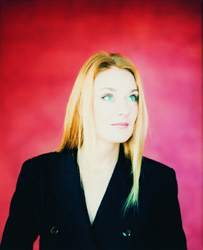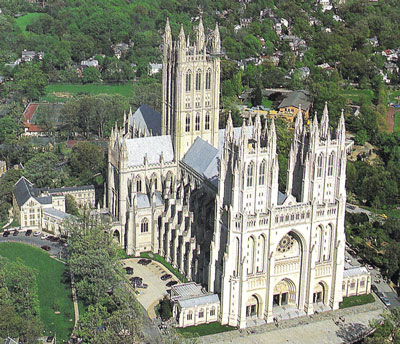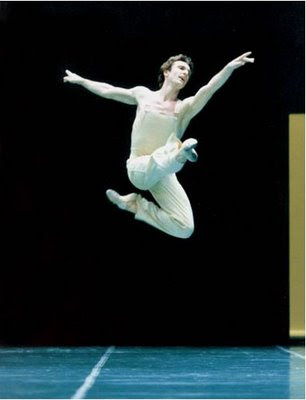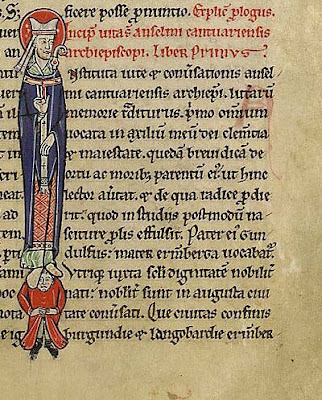May Concert Planner
After a calmer month of April, the May schedule is burgeoning with far too many excellent concerts for one pair of ears to hear. The Ionarts crew is going to be working overtime.
 Composer Lera Auerbach (photo by F. Reinhold) |
>> The month opens with the CrossCurrents Contemporary Music Week, a festival at the Kennedy Center focusing on the music of fifteen living composers. Hear Lera Auerbach play her own music with cellist Alisa Weilerstein and mezzo-soprano Sasha Cooke (May 1), the adventurous string quartet ETHEL playing Phil Kline's Space (May 2), Joan Tower with the Muir Quartet and Kalichstein-Laredo-Robinson Trio (May 4), a new work by Ellen Taaffe Zwilich (May 5), the Nash Ensemble of London playing music by Oliver Knussen and others (May 6), Leila Josefowicz playing Knussen's new violin concerto with the National Symphony Orchestra (May 7 to 9), and a special concert of contemporary music with the NSO (May 10).
>> In other events not part of the Kennedy Center festival, Jenny Lin will play music by Ligeti, Messiaen, and Unsuk Chin at the Strathmore Mansion (May 7), the young composer Tudor Dominik Maican will play works for piano, including his own, with pianist Timothy Andres, also at the Strathmore Mansion (May 14), composer Sofia Gubaidulina will appear with the Moscow String Quartet at the Freer Gallery of Art (May 21),
 Pianist Till Fellner |
>> It would be a shame to miss the chance to hear Nelson Freire playing Beethoven's fourth concerto with the Baltimore Symphony Orchestra (May 1 to 3). Washington Performing Arts Society will present a recital by pianist Louis Lortie (May 2) in the Kennedy Center Concert Hall. His last performance of this program, all of the Chopin etudes (at Shriver Hall), was very good, if not as impressive as his 2006 recital at the National Gallery. The third installment of Till Fellner's Beethoven sonata cycle is scheduled, on the Embassy Series, for the Austrian Embassy (May 11). Compare Fellner's take on the Hammerklavier sonata with that of Valentina Lisitsa, who will give a recital at the National Museum of Women in the Arts (May 20). For more Haydn, also at the Austrian Embassy, check out Christopher Hinterhuber in an all-Haydn program (May 15).
>> In the historical keyboard department, put down the concert by fortepianist Ludwig Sémerjian at the Library of Congress (May 1). Legendary harpsichordist Trevor Pinnock performs with flutist Emmanuel Pahud at Baltimore's Shriver Hall (May 3). La Maison Française brings back harpsichordist Maude Gratton will her ensemble Il Convito (May 14).
OPERA:
>> Staged opera productions this month include Britten's Albert Herring from Baltimore's Opera Vivente (May 1, 3, 7, and 9), the third installment of Francesca Zambello's American Ring Cycle with Siegfried at Washington National Opera (May 2, 5, 9, 14, and 17 -- already almost sold out), and Puccini's warm fuzzy Turandot, also from Washington National Opera (May 16 to June 4, various dates).
 Magdalena Kožená, mezzo-soprano |
>> If you are looking for a way to introduce children to opera, the Children's Chorus of Washington will perform a new children's opera by Imant Raminsh, The Nightingale, at the Harman Center for the Arts (May 2 and 3).
FURTHERMORE:
>> In the world of historically informed performance (HIP) practice, the Washington Bach Consort will present a program of Handel favorites at Strathmore (May 3), as well as the final installment of this season's free Noontime Cantata series, with Ich hatte viel Bekümmernis (BWV 21) at the Church of the Epiphany (May 5). There will also be concerts by the Suspicious Cheese Lords in the Mansion at Strathmore (May 6), Purcell's masque King Arthur with the Bach Sinfonia at Strathmore (May 9), and violinist Nicholas Kitchen playing the Bach solo violin works and demonstrating five historic violins by legendary Cremonese makers at the Library of Congress (May 23).
>> For the chamber music lover, there are welcome appearances by the Klavier Trio Amsterdam at the Corcoran Gallery of Art (May 3) and La Maison Française (May 4), the last visit of the Musicians from the Marlboro Festival at the Freer Gallery of Art (May 6), and more flutes than you could shake a stick at when the flute sections of the NSO and KC Opera House Orchestra combine for a concert at the Chevy Chase Presbyterian Church (May 16).
>> Noteworthy concerts by string quartets include the Emerson Quartet playing music by Haydn, Ives, and Beethoven at the National Museum of Natural History (May 17) and the return of the Jupiter Quartet, with violist Roger Tapping and cellist Natasha Brofsky at the Corcoran Gallery of Art (May 31).
>> The visiting orchestra to hear is the Pittsburgh Symphony Orchestra, with conductor Manfred Honeck and cellist Alisa Weilerstein, presented by WPAS in the Kennedy Center Concert Hall (May 4).





































































